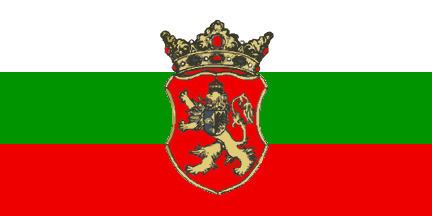 | ||
Bulgarians are a recognized national minority in Serbia.
Contents
Demographics
Censuses:
According to the 2011 census, there were 18,543 Bulgarians in Serbia. They are primarily located in two municipalities near Serbia's border with Bulgaria: in Bosilegrad there are 5,839 Bulgarians i.e. 71.9% of population while in Dimitrovgrad (Tsaribrod) there are 5,413 Bulgarians or 53.5% of population.
The dominant religion among ethnic Bulgarians in Serbia is Orthodoxy. Islam never arrived in areas like Bosilegrad because of the mountainous terrain and most inhabitants dwelled in high mountain villages where they were hard to reach. They use both Serbian and Bulgarian churches due to the low number of Bulgarian clergymen present in the region. There is a church in every village around Bosilegrad, and the oldest ones date to the 11th century.
History
The regional names once used by many people in the Torlakian-speaking region was Torlaci and Šopi. The borders of the region frequently shifted before the Ottoman conquest among Byzantine, Bulgarian and Serbian rulers. According to some authors during the Ottoman rule, the majority of native Torlakian Slavic population did not have distinct national consciousness in ethnic sense. Therefore, both, Serbs and Bulgarians, considered local Slavs as part of their own people, while local population was also divided between sympathy for Bulgarians and Serbs. Other authors from the epoch, take a different view and maintain that with the rise of nationalism under the Ottoman Empire in the 19th century the inhabitants of Torlakian area had begun to develop predominantly Bulgarian national consciousness, however after Serbia gained the area in 1878 the population slowly changed its ethnic affiliation to Serbian. The first known literary monument, influenced by Torlakian dialects is the Manuscript from Temska Monastery from 1762, in which its author, the Monk Kiril Zhivkovich from Pirot, considered his language as: "simple Bulgarian". In the 19th century the region was one of the centres of Bulgarian national revival and was included at a whole in the Bulgarian Exarchate (1870-1878). It was also stipulated the area to be ceded to Bulgaria according to the Constantinople Conference in 1876 and most of it according to the Treaty of San Stefano in 1878.
Following World War I, four territories, now known to the Bulgarian community as the Western Outlands, passed to the Kingdom of Serbs, Croats and Slovenes from Bulgaria as a war indemnity, and the remains of the old border can be seen at Vlasina lake. In the Interwar Period, the Internal Western Outland Revolutionary Organisation, countering Yugoslav rule in the region, was engaged in repeated attacks against the Yugoslav police and army. During World War II Bulgaria retook the Western Outlands, as well as Pirot and Vranje. After the Second World War, these regions were returned to Yugoslavia. After Serbia's independence, these areas remained within Serbia.
